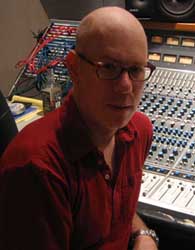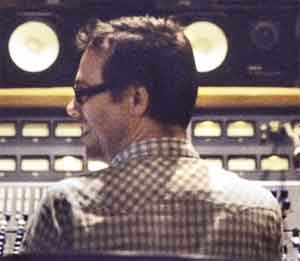Review: UAD Harrison 32C EQ By Geoff Sanoff, With Eli Janney
Universal Audio released its Harrison 32C EQ plug-in this spring with fanfare about how this was the EQ that Bruce Swedien had used on Thriller. Universal Audio had modeled Swedien’s exact console, using the man himself as the arbiter of success.
Don’t get me wrong, Bruce Swedien is a legend, and Thriller is a classic record. But I thought to myself, “Michael Jackson, Quincy Jones and Bruce Swedien are going to make a great sounding record no matter what board they use. Do I really want (or need) another EQ plug-in, specifically one modeled after this console I really haven’t heard much about?”
UA has modeled several classic-sounding EQs including the Neve 1073 and 1081s, the Helios EQ and the Pultec EQP-1 and MEQs. Additionally, their Cambridge EQ is a very solid, clean sounding digital equalizer. Then there’s the UAD Neve 88R channel strip and alongside the Harrison EQ, UA has also released the UAD 4k channel strip modeled after the SSL E/G series EQ and compressor. And there are so many other EQs out there in the world at large to choose from that I had to wonder: what makes the Harrison worthy of UA’s expertise and effort?
FIRST IMPRESSIONS
What I noticed first about the Harrison is that it’s fully parametric, which makes it unique in the UAD lineup of classic EQs (with the exception of the 2 channel strips, I suppose). Each of the Harrison’s 4 frequency ranges: lo, low mid, high mid, and high, as well as its high and low pass filters, have variable frequency knobs so you can dial in the spot you’re looking for.
Now, you can do this on many other EQs, not the least of which is the Digirack EQ3 that comes with Pro Tools. But within the UAD family, the only parametric EQs are the UA4k Strip, the Neve 88R Channel Strip and the Cambridge EQ. So in that context, the Harrison — which is not a channel strip but is certainly “classic” — suddenly makes more sense.
But that still doesn’t answer the two key questions: How does it sound? And, is it worth the $250?
PLUGGED IN ON BASS TRACKS FOR BLK JKS
Over the course of mixing the new record for South African avant rockers, Blk Jks, for Secretly Canadian Records, I found out what this EQ is about. As a starting point for comparison, I’d say it sits in the API-ish neighborhood as far as color and punch go.

Geoff Sanoff mixed Blk Jks record, After Robots, out September 8, 2009 on Secretly Canadian Records.
Blk Jks music is very dense, ranging from Afro-beat funk jams to metal riffage and even some psychedelic and goth-y elements. [Stream their new record, After Robots, on JamBase] The Harrison was a great tool allowing me to cut through the murk while emphasizing the character of the sounds that producer Brandon Curtis [of The Secret Machines] had worked hard to create. It was a subtle navigation between keeping the production alive and atmospheric while maintaining the punch of their rhythm section. The 32C helped chart the course between clarity and sterility.
My first use for the Harrison was on the Blk Jks bass tracks where I was trying to get as much definition by controlling the low mids. The bass was recorded with a DI and one or two amp cabinets, which I bussed together. I just couldn’t get what I wanted with the Neve options, and I was looking for something with character, ruling out the Cambridge EQ (which I also tried for this application.) Enter the Harrison 32C. I was able to very efficiently cut the mud out of the low mids, on just about every bass track on this record using the Harrison 32C.
The goal was to get away from too-clean a bass tone, keeping it interesting but focused, without losing the real low end. I like that coloration, i.e. harmonic distortion can do wonders too tighten up a bass track, but care must be taken not to lose too much of the sub. Blk Jks have a dub-ish quality to some of the bass parts and maintaining this element was important.
The “Q” of the 32C (the width of the filter) “auto-adjusts,” which though it’s not thoroughly explained in the documentation, it does seem to work. In fact, once I got my head around it, it became the go to plug-in for most of the cutting EQ I used on this record.
I didn’t need it to boost the lower end of the spectrum on these bass tracks as there was generally plenty of sub to go around, and when there wasn’t I wanted a more dynamic low end to go with the kick, something a regular EQ wasn’t going to provide.
AND ON THE HIGHER END: VOX, ACOUSTIC GTRS
I found the hi-end of the EQ to be quite smooth as well, though not as open or smooth as UA’s Helios EQ. Unlike the fixed 10k of the Helios, however, the overlapping ranges of the 4 EQ bands allowed me to make the most of cutting and boosting on a number of tricky acoustic guitar and vocal tracks.
I tend to use the 1081 on those instruments. But sometimes, given the uniqueness of human voices and acoustic guitars, I just can’t find the spot where clarity and punch shine through without a certain shrillness using the 1081. The 1073’s 3-band limitation makes it less of a utilitarian choice as well. Either the “Q” of the Neve is too wide or the frequency selection is just not right. The parametric design of the Harrison gives you a lot of room to play with, all the more so because of the large overlap among frequency bands.
And yet, it still has a reasonably aggressive, solid-state coloration. That harmonic complexity is what folks seem to miss in the digital realm and what has me relying on UA plug-ins for my in-the-box mixes. The 32C could become my first choice in many applications simply because it covers so much ground.
As far as limitations go, I didn’t tend to favor the 32C as much when adding bottom end. I think the Pultec and the Helios, or possibly the Cambridge, tend to get more use in that arena. And the Neves just have that natural thickness to them, but that’s not to say the Harrison doesn’t handle that function well. I just gravitate to its siblings in the UA universe when boosting low end.
Actually, if I were new to the UAD plug-ins, I think the Harrison might just be the best starting point for its all-around utility. Its name brand is not as sexy as Neve or Pultec but for engineers on the UA platform trying to go as far as possible with their money, the Harrison 32C EQ is a pretty strong contender for being the best all-purpose EQ plug-in.
ELI JANNEY’S TAKE ON THE HARRISON 32C EQ
The Harrison 32C EQ by UAD sits in an interesting spot in their line up. The coloration and the harmonic complexities of the Neve 1073 and 1081 are legendary, and UAD’s versions capture the sound very, very well. The warmth and low end girth of Pultecs are also extremely well done, covering all that you need to punch up kicks and basses. So what is the Harrison good for?
It is a wonderfully colorful parametric, filling in the duties where the Neve is not precise enough and the Pultecs are too broad.
Having used their Cambridge EQ, which is very clean clinical mastering-type parametric EQ, the Harrison does duty as a similar EQ on material where you want to have lots of precise control, but add some coloration as well. It’s got some smooth harmonic smear — just a touch — enough to give it some character, where the Cambridge is invisibly surgical.
I used the Harrison a lot on piano and strings when I was mixing Wilco’s Ashes of American Flags live concert DVD, to dial in some mid-range presence while adding a tiny bit of crunch, not unlike an API 550B or 560.
It also works well with guitars, and although I would usually go to the Neve first, having a distinct second texture to add to the mix is sometimes a godsend.
Click for more information on the UAD Harrison 32C EQ ($249) and how to purchase it.
Geoff Sanoff and Eli Janney have worked on several records together over the years, with Janney producing and Sanoff engineering. This list includes, more recently, Stephen Fretwell, Motion City Soundtrack and the Obits. A producer/engineer/remixer, Janney was in the band Girls Against Boys and has recently worked on records with Nicole Atkins, Holy Fuck and Wheat.
Please note: When you buy products through links on this page, we may earn an affiliate commission.








